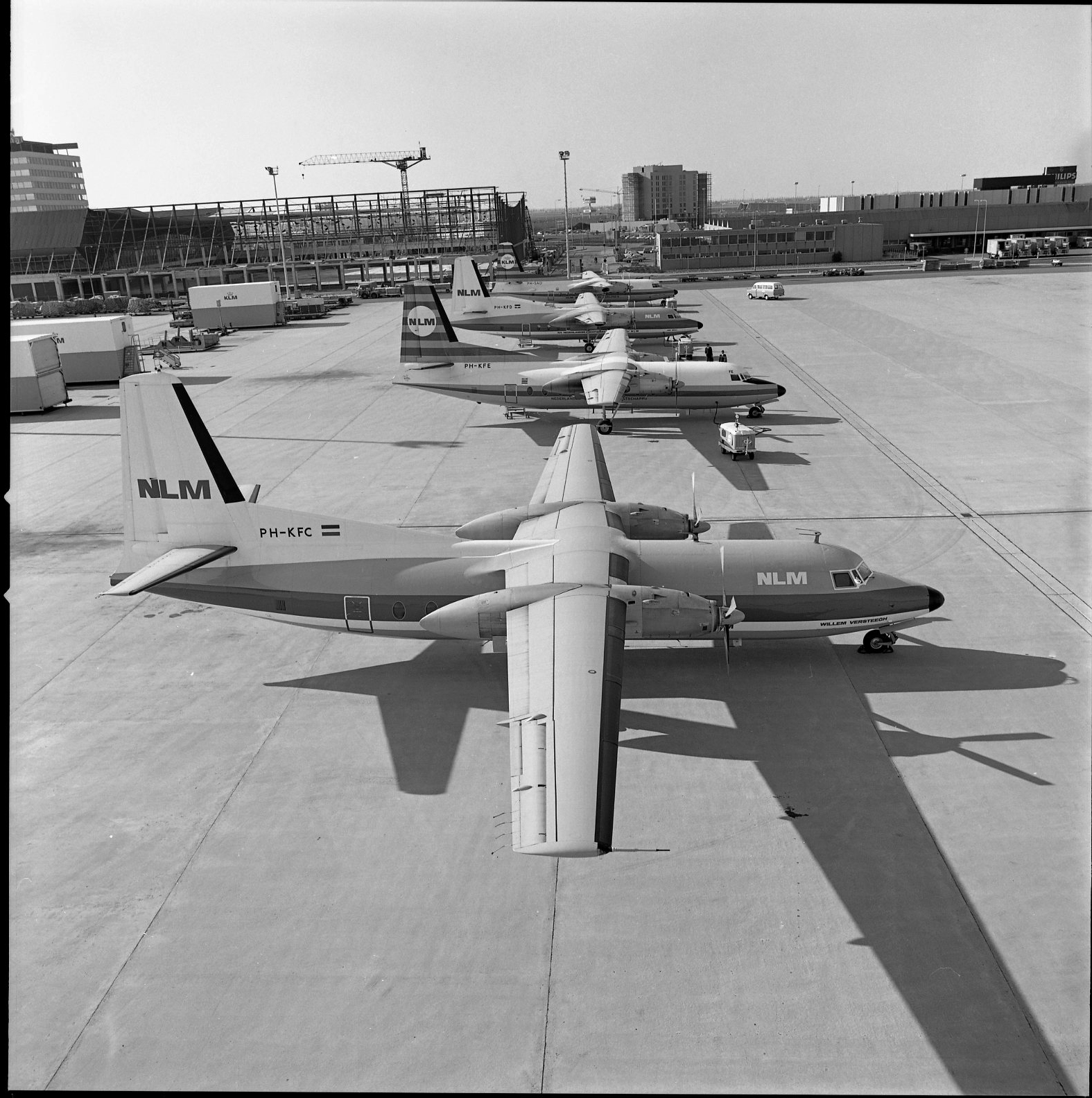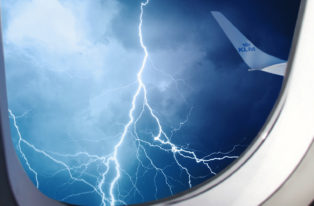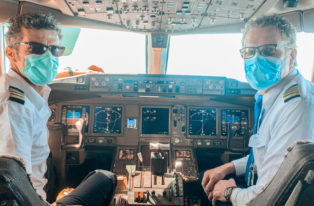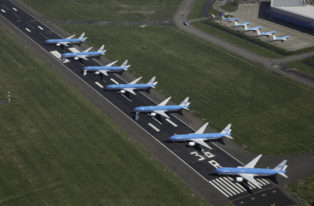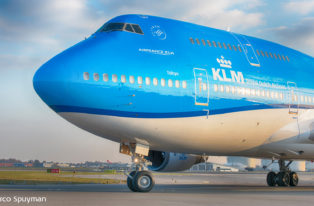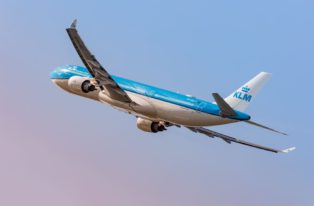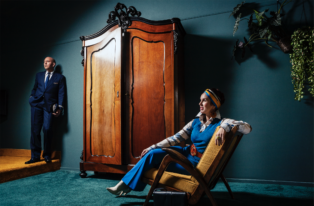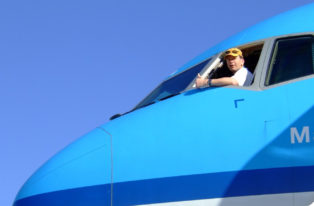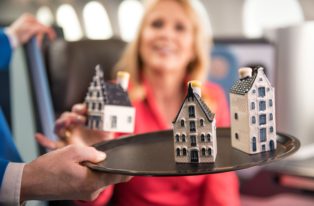KLM’s Little Sister Turns 50
It’s fun flying KLM Cityhopper, partly because you don’t board the flight via the jetway, as you mostly do in Europe. Instead, you get a platform-view of plane before you head up the stairway, where the cabin crew are waiting to welcome you on board. Having started out as NLM in 1966, the airline took the name KLM Cityhopper in 1991. The past 50 years have seen KLM’s little sister developing into a fully-fledged airline, carrying more than 7 million passengers a year.
KLM made two previous attempts to launch a domestic network; once before the Second World War and once immediately thereafter. Both proved to be unprofitable, even when prices were halved to attract more passengers. The discount worked, but more traffic didn’t lead to more profit, so the plug was pulled on the domestic network.
Daring step
The tide turned again in the 1960s. The industrialisation of the northern and southern provinces of the Netherlands fuelled population growth, making it more interesting to establish speedy connections with Schiphol and the country’s western conurbation. Having assessed demand with trial flights for a while, KLM took the plunge and established the Nederlandse Luchtvaart Maatschappij (Netherlands Airline Company, NLM) in 1966. Two lines were established initially. The Northern Line flew from Amsterdam to Groningen via Enschede, while the Southern Line flew from Amsterdam to Maastricht via Rotterdam and Eindhoven. The fleet consisted of two Fokker F27 Friendships, which were rented from the Royal Netherlands Air Force and had to be converted for civilian use. The new airline employed 22 people: 21 men and 1 woman (the director’s secretary).
 First flight from airbase Eelde.
First flight from airbase Eelde.
The new airline operated two inaugural flights to Schiphol on 29 August 1966, from the airbases at Eelde (Groningen) and Beek (Maastricht). In the annual report for 1966-1967, the board remarked that the venture had produced “satisfactory results”, with average load factors of 46% for the Northern Line and 35% for the Southern Line during the first six months in operation.
Although these lines were primarily established with business travellers in mind, the airline also targeted another market: young air travellers. KLM wanted to use the NLM to allow youngsters to experience flying for the first time. In the years that followed, many youngsters found their way to the airline, as did many elderly people who were keen to get their first taste of air travel with NLM, which regularly operated excursions over the Netherlands as well as scheduled services.

Ups and downs
NLM’s results improved gradually during those early years. The fleet consisted of four Fokker F27s, allowing the network to be expanded to foreign destinations such as Hamburg (out of Eindhoven) and Bremen (out of Groningen). On its 10th anniversary in 1976, the airline was renamed NLM CityHopper, making it easier to develop a distinctive brand outside the Netherlands.
 NLM fleet in 1972.
NLM fleet in 1972.
The airline experienced one of its darkest days on 6 October 1981, when one of its Fokker F28 Fellowships crashed near Moerdijk in a heavy thunderstorm. All passengers and crew lost their lives, as did a fireman on the ground, who suffered a heart attack when he witnessed the crash. The storm had exposed the aircraft to forces that it was not built to withstand, causing one of the wings to break off, which led to the crash.
On the way to adulthood
In the 1970s and ‘80s, NLM CityHopper expanded its network to numerous European destinations, which were served from regional airports in the Netherlands. The airline also operated flights out of Schiphol and gradually became a so-called “feeder airline” for passengers transferring at Schiphol.
In 1988, KLM took over the regional airline Netherlines, which was run under KLM management. The two domestic subsidiaries were merged in 1991 and began operating as a single entity under the name KLM Cityhopper BV.
Around that time, KLM took a 14.9% share in Air UK, which was then the UK’s third-largest airline. The aim was, once again, to ensure better connections with Schiphol and to acquire a bigger share in the intra-European airline market.
 KLM Cityhopper promoteam in 1991.
KLM Cityhopper promoteam in 1991.
1 Million passengers
In fiscal 1991-’92, when the airline became KLM Cityhopper (KLC), it transported more than a million passengers across its network of 36 destinations. By that time, the Fokker F27s were nearing the end of their lifecycle and were replaced with Fokker F50s. The airline bade farewell to its last F27 in 1992.
Capacity was gradually increased in the years that followed, with the biggest leap marked by the arrival of no fewer than 10 Fokker 70s to replace just four F28s. At that point, KLC operated three different types of Fokkers: the F50, F70 and F100, making it the airline with the world’s biggest Fokker fleet.
 First Fokker 70 in 1996.
First Fokker 70 in 1996.
Meanwhile, KLM gradually increased its share in Air UK and, as a cost-saving measure, merged the Air UK sales organisations in the UK and Italy with those of KLM. Before that, KLC’s marketing, sales and network planning departments were placed under KLM’s wing, but the rest of the airline operated as an independent subsidiary within the KLM Group. In 1998, KLC took over Air UK as a whole and formed KLC UK, which saw British and Dutch cabin and cockpit crew working side-by-side on board, as is still the case today.

Fleet renewal
The merger led to rapid growth for KLC and by 2006 its fleet consisted of 55 Fokker aircraft: 20 Fokker 100s, 21 Fokker 70s and 14 Fokker 50s. The airline then served more than 45 European destinations, carrying more than 5 million passengers at year. By then, the decision to replace the Fokkers had already been taken. The need for more capacity, combined with the ending lifecycle of the Fokkers, led to a fleet renewal programme that is only just approaching completion.
The Embraer, manufactured in Brazil, was chosen to replace the Fokkers. KLC opted for the E190, which has 100 seats. The fuel consumption of these slim, twin-engined planes is considerably lower than that of the Fokkers, but they can carry just as many passengers as the Fokker 100.
Today, all of the Fokker 100s have left the fleet, but those who wish to see them in their KLC livery can still do so at the Aviodrome in Lelystad and on the Panorama Terrace at Schiphol. Both aircraft were donated by KLC.
 Last Fokker 50 flight in 2010.
Last Fokker 50 flight in 2010.
KLC welcomed its first Embraer in November 2008. The E190 proved to be such a success that, shortly after the arrival of the first three, another seven were ordered. KLC also decided to deploy a second type: the Embraer E175. This aircraft is smaller than the E190 and serves destinations with lower passenger demand. KLC opted for the more economical E175+ type, and now operates three of these aircraft which makes the number of Embraer aircraft 33. Meanwhile the Fokker 70 leaves the fleet and next year the curtain has definitively fallen for the Fokker aircraft.
 Embraer 190 in 2014.
Embraer 190 in 2014.
A fully-fledged company
In the early years, NLM’s staff were often seconded from KLM, but the airline later began employing its own “NLM-ers”. In 1976, the airline also began hiring its own cabin crew, who actually combined their airborne work with various duties on the ground, which meant the person who checked you in at the desk, later served you on board the flight.
Over the past 50 years, NLM was transformed from a small outfit, with a workforce of 22, into fully-fledged airline serving 58 destinations, serving more than half of all European flights within the KLM network. Every year 7,3 million passengers are welcomed aboard a KLC flight. In short, KLM’s little sister has become a lady in her own right.

